On Surfing With Epilepsy
1 in 26 people battle epilepsy. Some of them surf Maverick’s.
A few months ago, while on solo-dad duty and deeply missing the ocean, a surf report request was responded to with, “Did you hear Kalani David died from a seizure while surfing?”
I immediately ran through the mental history of my many trials and tribulations with epilepsy. Starting with my first conversation with a neurologist, a conversation that has become my tagline whenever speaking about epilepsy: “If you want me stress-free, I can’t be salt-free.”
My neurologist told me I couldn’t surf anymore because of the possibility of death, and I simply refused. I had very little understanding of the condition, and as a 17-year-old on his way to a college just above Black’s Beach, I was not going to say goodbye to my passion. Some people label this as brave, but in retrospect, I think of it as more naïve.
For the first few years of my battle, I informed very few people, took my medicine whenever I remembered, and did everything possible to ignore the possibility of the next seizure. I told myself the ocean provided me the peace that would keep the seizures away, so I need not fear.
Little did I know that this attitude would only make the seizures more predictable and inevitable. It took a 10-day coma triggered by a seizure that forced me to refine my approach. Had it not been for my good friend wondering why I hadn’t awoken him for the south swell gracing San Diego one morning, I likely would have died. And while this seizure may have happened no matter what, my lack of being rigorous about medicine and addressing my mental health did nothing to prevent it. My parents, rightfully, started a rule that I had to text a confirmation of pills taken by 9:05 every morning and evening. If I didn’t text by then, a call was on the way. And I hated them for it. I hated the epilepsy. I hated the medicine. I hated my doctor. I hated the system. I had no clue what lay ahead. Not only did I not want epilepsy to define me, but I also didn’t want it beside me.
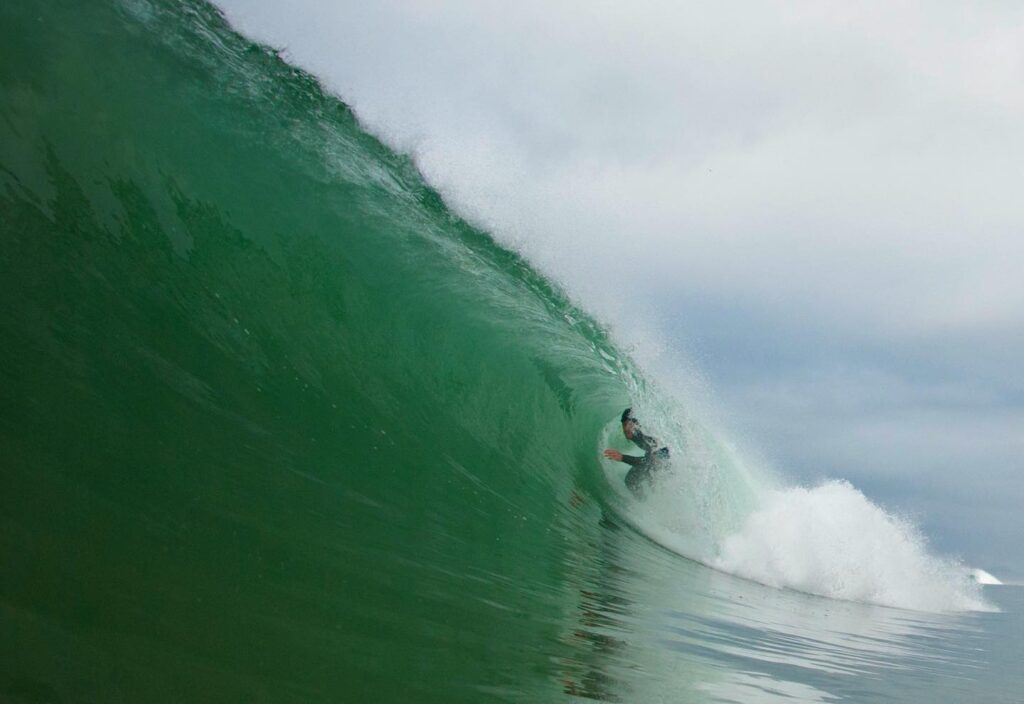
Over the next few years, my seizures went in and out of control, but my surfing never stopped. Sure, I visited my neurologist twice a year, had organized pill boxes, and made sure all those who I spent time with (employers included) knew about the condition and how to provide correct seizure first-aid. But I didn’t want to think of epilepsy often. I didn’t do any research on the medicine I took. I didn’t ask the doctors any questions. I did everything possible to keep it out of mind.
I decided to truly confront the epilepsy after a bad run of seizures triggered by missed medicine and lack of sleep sent me into the hospital during a run of Thanksgiving swell I still FOMO over.
I wrote about my renewed approach as “epileptic opportunity” – the idea that I would treat this condition and the challenges it presented as an opportunity to learn more about my health and bring awareness to epilepsy. I reached out to the Epilepsy Foundation asking if they would be interested to collaborate on an awareness paddle, almost certain they would say “no” because of the common conception of no surfing with epilepsy. But they were excited and — aside from collaborating on coverage and fundraising — they also offered direct support. I became friends with the team and found myself connected with people who understood the mental turmoil that epilepsy brings.
Through this team, I learned more about epilepsy than I had thought existed. From the many different types of seizures to the many different medicines to the tests to the different causes of seizures and above all to just how common it is.
1 in 13 people will have a seizure. 1 in 23 people have epilepsy. It’s more common amongst surfers than you might think.
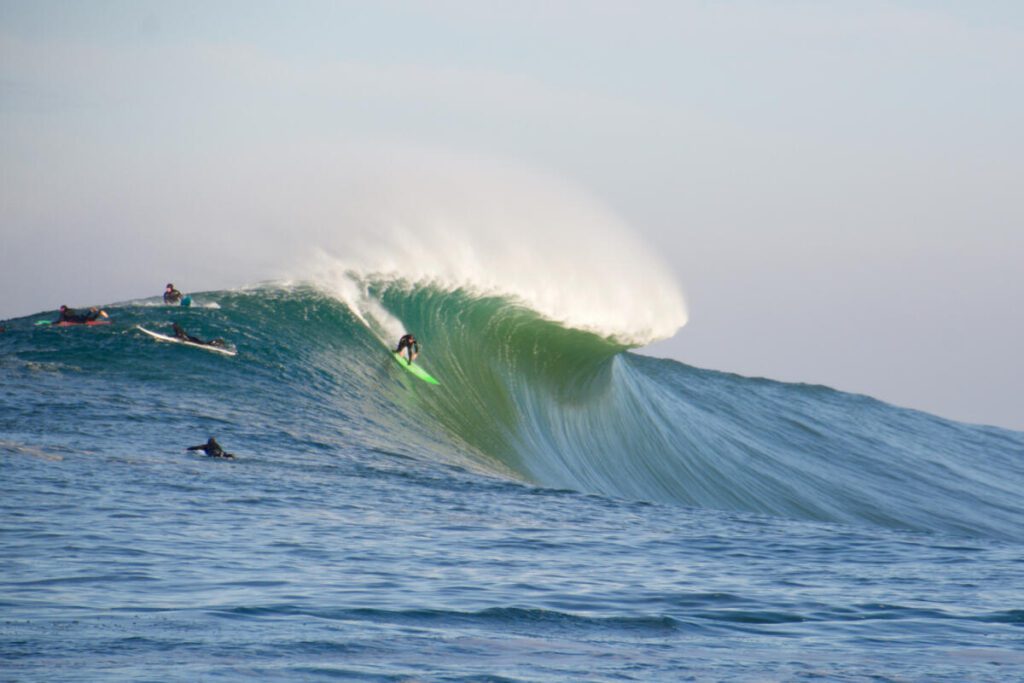
A couple of my peers in the Maverick’s lineup, Colin Dwyer and Ryan Seelbach have stories similar to my own. But we never reached out to each other to talk about it until one evening at Old Princeton Landing when Colin complimented me for making social media posts about epilepsy awareness (not my waves). We talked in depth about the differing causes and times of our seizures, as well as the medicines we were prescribed and why none of us talked too much about it to the rest of the lineup. As Ryan put it, “When I was first diagnosed, I was kind of embarrassed by it.”
As soon as the news of Kalani’s passing broke, I reached out to these two to offer support, ask for support, and talk further about our different personal battles.
Ryan was diagnosed after a series of concussions sustained while playing rugby triggered his first seizure in his early 20s. His first neurologist also told him to stop surfing, and Ryan simply refused. His seizures were well controlled by his medication and always happened in his sleep, and you don’t sleep while surfing — so why be scared? But more importantly, as a stalwart of the big wave community, Ryan well understands the possibility of death while surfing and wasn’t afraid to face it. Looking back, he recognizes he was in his mid-20’s, the period when you have your life in your palms and get to call your own shots. “To tell yourself ‘I can’t do this,’ is incredibly hard.”
While loading a boat for a surf trip with a good friend, Ryan realized he had forgotten to pack his medicine. His friend told him it was fine to turn around to pick it up or to cancel the trip altogether. Instead, Ryan weighed the odds and told him, “Odds are after 48 hours I may have a seizure and it would probably be at night.” So, he prepped his friend on seizure first aid and off they went. Sure enough, two days into the trip after scoring perfect waves, Ryan awoke from a seizure with his friend helping to make sure he was on his side — the seizure was timed, and Ryan would be comfortable thereafter. He spent the next day watching his buddy score perfect waves from the sand.
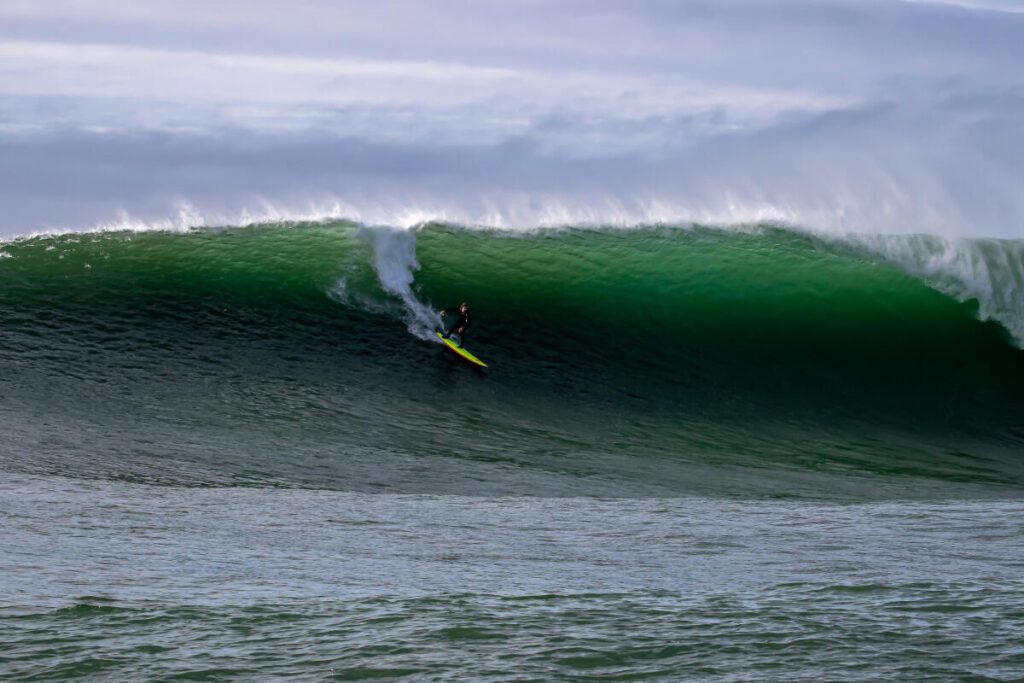
“Seizures are scary, but it’s not as simple as that,” he says.
Colin was also diagnosed in his early 20’s, waking up from his first seizure with the room filled by his parents, girlfriend, and paramedics. Shortly thereafter the DMV suspended his driver’s license, and the possibility of surfing wherever and whenever was revoked. Even with a family full of surfers who put no pressure on him to stop surfing — and in fact brought him with them whenever possible — he fell into a deep depression. The mental battle of the diagnosis, the new medicine, and the trauma of seizures took its toll.
Surfing became more vital than ever before. And instead of diving away from epilepsy, he instead explored it deeply while studying for a psychology degree at San Francisco State. Then, during a trip to Puerto Escondido with his two cousins and Pat Shaughnessy, he had another seizure. Awaking to his paramedic cousin, Travis Payne, telling him, “You had a seizure, you’re going home.” But he argued about the pain of leaving perfect Puerto until Greg Long said, “No, I am flying back with you.” While on the flight home, he had another seizure which led to the plane making an emergency landing at LAX before he was deemed healthy enough to continue the flight back to SFO.
Over time, Colin lost faith in his Keppra medical doses – both because of the side effects and the forced routine of keeping doses at the perfect 12-hour timeline. It’s not easy to paddle-in from a session at Maverick’s to take some medicine that made him drowsy, and it was even harder to take it during late-night study sessions. After an EEG was deemed “borderline” and follow-ups were relatively inconclusive, his doctor told them the seizures “may not happen again.” Thus, he made the decision to ditch the medicine — a decision his girlfriend and mom did not love. But one that in the end, helped him find his energy and brought back the stoke.
“To be honest, I got off lucky despite being a poor patient.”
However, one thing kept strong in the back of his mind: “I must surf as a means of treatment.” Doctors might not agree with him, but I think any surfer will. “For people like us, surfing is breathing and if we die doing it that’s the most fitting way for us to go,” Colin said. “So, we don’t ever think about the wake of destruction that would ensue. Surfing is a very selfish pursuit and I think decisions like that really magnify just how selfish it is.”
He then went further, “It’s hard to put into words what this is like for us, knowing you’re sort of gambling with your life just for a surf. People ask me all the time, ‘Aren’t you worried you’ll have one out at Mavericks?’ I lie to them and to myself and say things like, ‘When the flight or fight response is that active, the brain won’t seize and all my seizures happen while I’m asleep, so no, I don’t worry.’ This is an unrealistic rationalization, no doubt. I reasoned that I could just as easily die in a car accident driving to the beach or drown because of a wipeout. I definitely worried, but ultimately, I keep surfing as if I’ve signed a contract with myself that if I pass like that I would be at peace with my decision. It’s an uncomfortable conversation to have with yourself. But again, surfers are selfish. We are willing to stare death in the face just to surf, despite the pain it would cause our families. My heart goes out to those families and loved ones affected by these horrible outcomes.”
I still feel fortunate to be alive after my 10-day coma. Even more fortunate my renewed perspective led me to the epilepsy foundation and thus a new neurologist. A neurologist who took a different approach than my previous doctors and sent me through a run of tests that were enlightening, and in the end liberating. It was discovered I was born with Focal Cortical Dysplasia, a malformation of cortical development, it is the most common cause of medically refractory epilepsy in the pediatric population and the second most common etiology of medically intractable seizures in adults. Or in layman’s terms, “a batch of happy neurons that will never listen to medicine for too long.” The only way to treat the dysplasia is to remove it, and fortunately for me the FCD was located in my front left temporal lobe, hanging out on my amygdala, which is an area that doesn’t affect my cognitive skills. Seven months after learning about the FCD and many more tests thereafter, I went under a knife on March 12, 2018 to have a little over a cubic centimeter removed from my brain. Since then, I have had only three seizures – each caused by the stress of the pandemic and missed medical doses. But overall, I have a brain that works better than before and take only 1/3 the amount of medicine I used to take, with the dosages shrinking every six months seizure free.
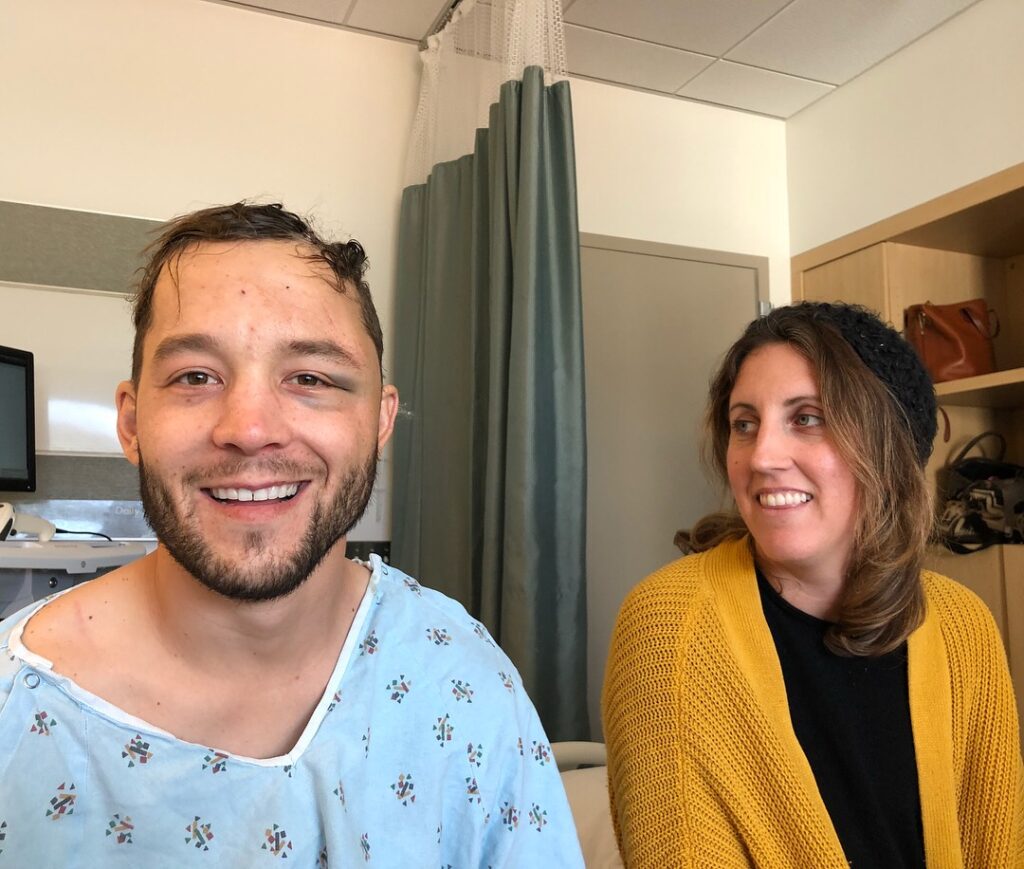
Ryan, Colin, and myself have had the fortune of working with neurologists, taking tests, and finding a routine, be it with medicine or with the ocean, that controls the seizures and keeps the side effects at bay. They didn’t have to go through endless tests or a brain surgery and tell me their stories pale in comparison to my path through coma and surgery, but I beg to differ. Epilepsy absolutely sucks for all involved. Waking up from a seizure is a traumatic event. Taking medicine every day is not fun. Balancing side effects is an endless dance. Always having the slight fear a seizure may occur is not easy.
Epilepsy is different for every person, be it the cause, the types of seizures, the medicines, the neurologist relationship, and much more. But there is one thing consistent: a desire for control.
I did not know Kalani David personally, but we have some friends in common. Since his passing, I have heard from each of them what a true warrior he was. Reading through his Instagram posts about his trials with epilepsy gives you a sense of the many difficulties people like him, Ryan, Colin, and myself face when confronted with the epilepsy challenges — what’s better, to live in a bubble or to attack the epilepsy with the passion you attack each wave?
Maybe for some it’s the former and for other the latter. Either way, epilepsy is personal and different for each person battling it. To those who have epilepsy, I encourage you to reach out for support and think through a plan to make your medical approach efficient and productive. Make a good relationship with your neurologist. Find a therapist. Get an organized four-week pill box, set reminders on your phone, and make the pharmacy happy to see you.
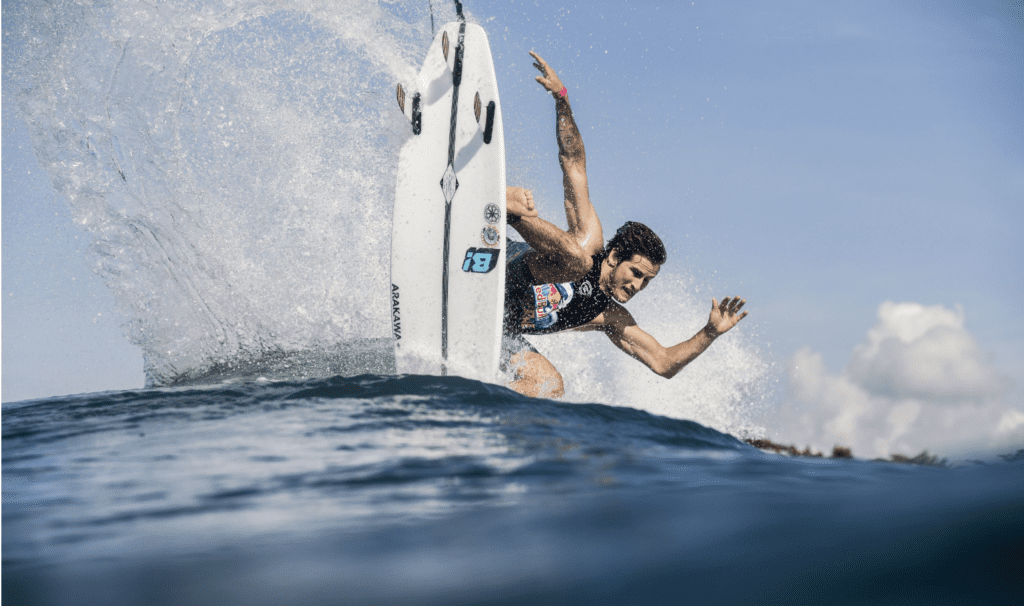
To those who have a loved one with epilepsy, know that this person is in need of support through empowerment. Don’t let your fear of seizures be felt by the warrior. Even though I know the horrid pain of having a seizure, I can’t even imagine the pain of watching one. Study epilepsy so you are prepared to answer questions and help if any are brought to you. It is vital you do not scare the warrior away from confronting the condition — rather, try to make them feel proud to do such a thing. Put them in the position to lead.
At the end of it all, putting your happiness on hold because of epilepsy is nearly as bad as the seizures themselves. Should we expect people with epilepsy to cast their identity to the side all because of the possibility of death while the likelihood of an epilepsy cure is so slim? You have one life to live, and living it fully is the foundation for happiness. You must accept that epilepsy may end it, but you definitely don’t need to make epilepsy define it.
Epilepsy sucks. Let’s be real. If you suffer from it, know that you are not alone. Be it myself or the organizations listed below, you have allies. And, more importantly, you have a brand of bravery unlike most.
The Epilepsy Foundation has many geo-specific departments with teams ready to help you and your family directly. I have done a lot of work directly with the Los Angeles team (because I live in Santa Barbara) to help raise awareness, raise funds, and support peers. This foundation can help you learn more about how health care plans effect your access to doctors, to medicine, to tests, and more.
The Hundley Foundation was started by NFL pro QB Brett Hundley Jr and his sister Paris, has epilepsy. They have a podcast, Hazy not Crazy led by some epilepsy warriors who are passionate to support their peers in any and every way possible. This podcast provides a great look into the life of many epilepsy warriors of many different types.
Paul’s Purple Warriors is a small organization based in New Jersey that does a lot of direct work to empower epilepsy warriors while also providing support. The empowerment is in many forms from summer camps to surf lessons. The support is direct safety measurements such as Seizure Safe Schools legislation that is sweeping across our nation, state-by-state.





Comments
Comments are a Stab Premium feature. Gotta join to talk shop.
Already a member? Sign In
Want to join? Sign Up